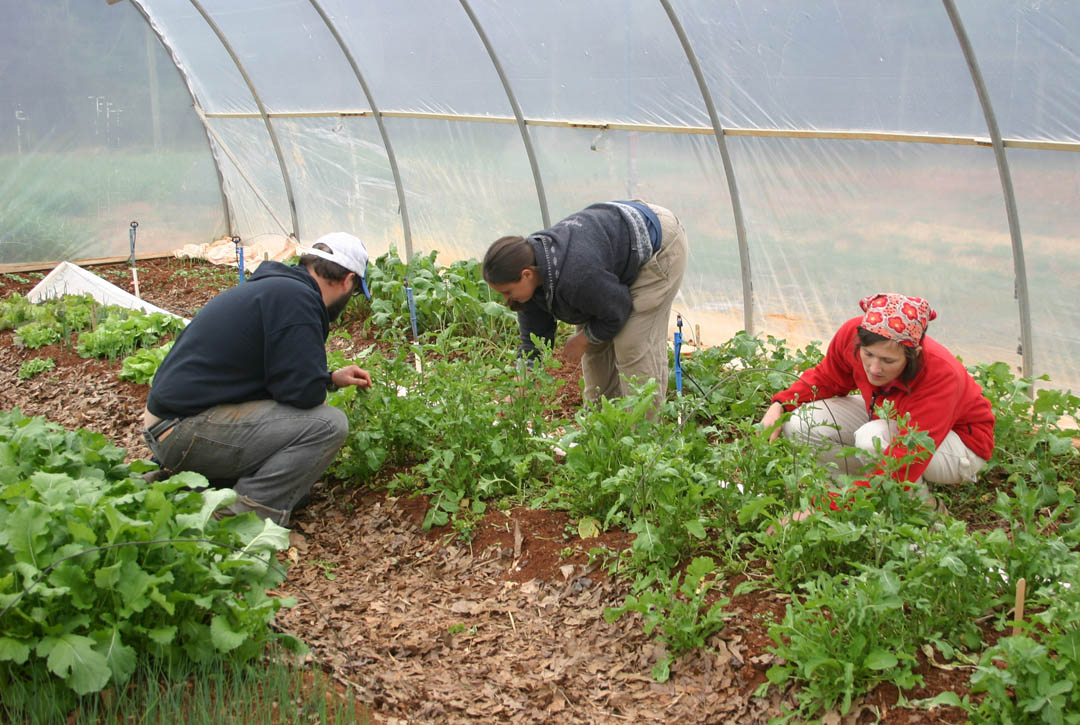North
Haven, Me.
When
Brenna Chase was farming in Connecticut a few years back, new farmers
weren’t always welcome by oldsters. The pie, she says, just wasn’t
big enough. “But now,” she said to me here, where she now farms,
“the feeling is that the pie is getting bigger and that the more
people that get into this the better it will be for everyone.”
By
“this,” she means sustainable farming (here I use the term
interchangeably with “organic” because many ethical farmers can’t
afford organic certification), and the poised 33-year-old, who began
farming in high school, is representative of young people I’ve met
all over the country.
These are people whose concern for the
environment led to a desire to grow — and eat — better food. And
although chefs still get more attention, the new farmers deserve
recognition for their bold and often creative directions.
Rural
Maine, it would seem to almost all of us from “away” as they say
down east, is as unlikely a place to find new farmers as exists in
the lower 48: it boasts harsh, dark winters; a short, cool growing
season; acidic soil; and a transportation “system” that makes
shipping both in and out of state a challenge. (Even people have
trouble getting out, as I discovered Monday. And Tuesday.)
There’s
only a quarter as much land in farming in Maine as there was 100
years ago, but that’s changing. There are more farms today (up
around 50 percent since 1992), more acres in farms and more money
generated by farming than there were 20 years ago. This is, at least
in part, thanks to people like Ms. Chase, who follow in the footsteps
(foodsteps?) of one of the granddaddies of can-do, intensive organic
farming, Eliot Coleman.
Mr.
Coleman runs Four
Season Farm in
Harborside with his wife, the gardening writer Barbara Damrosch, and
has squarely faced nearly every challenge a new farmer can since he
started in 1968. Now, the 1.5 acres he cultivates, mostly in
vegetables, are not only almost unimaginably lush (Ms.
Damrosch’s gorgeous
flowers don’t
hurt), but they’re so productive that, in his cheerful, wise way,
Mr. Coleman almost gloats: “You couldn’t be in a less likely spot
than here to do what we’re doing,” he says, “and yet we’ve
transformed a poor, wooded area into a place where there’s nothing
we can’t grow.” I marvel at his artichokes; he responds: “I
grow them just to make the Californians nervous.”
Now
71, Mr. Coleman maintains his long-range view. (He delights in
telling the story about unloading a truckload of free clamshells when
a county agent came by. “The agent,” says Mr. Coleman, “was
incredulous: ‘Those aren’t going to break down for 100 years!’
But I was thinking, ‘I have 100 years of free fertilizer here!’
”) And he clearly loves the work. (“If work is what you do when
you’re not doing what you want,” he quips, “I haven’t worked
a day in my life.”)
He
sells his output locally for about $125,000 a year; most of that pays
for labor. If he scaled up, he reckons, the net income would be
greater. This, of course, is the concern of many new farmers: How do
you afford to buy land, hire labor and still make a living?
For
Mr. Coleman, this isn’t so much of an issue. In some circles he’s
a hero for his innovative approaches to fertilizing, greenhouses,
tool-making, teaching and more. He’s probably inspired as many
farmers as anyone in the Northeast, and his books, especially “The
Winter Harvest Handbook,” have taught the art of season-extension
to thousands of gardeners, including me. (His place isn’t called
Four Season Farm for nothing, and, remember, this isn’t San Diego.)
So book sales, speaking engagements and other money-generators for
both him and Ms. Damrosch help out with the income. (This isn’t
unusual. Most conventional farmers, even those of commodity crops, do
nonfarm work to help pay the bills.
That’s the current state of farming in America.)
For
newcomers, though, this is precisely the issue because, as Ms. Chase
says, “If you could make a good living farming, people would go
into it and stay in it.”
The
simple answer, of course, is to charge more for food. But can an
increasing number of sustainable farms find markets for
higher-quality, higher-priced produce?
Here,
the answers become complicated: “If the cost of food reflected the
cost of production,” says Ms. Chase, “that would change
everything.” And this is undoubtedly true. But though sustainably
produced food is too expensive for some, conventional food doesn’t
reflect either the subsidies required to grow it or the huge
environmental or health care costs it incurs. Once it does,
sustainable food would appear far more competitive.
Then
we’d see more farmers growing it, not only in Maine but everywhere
else. Which would, indeed, be better for everyone.






No comments:
Post a Comment